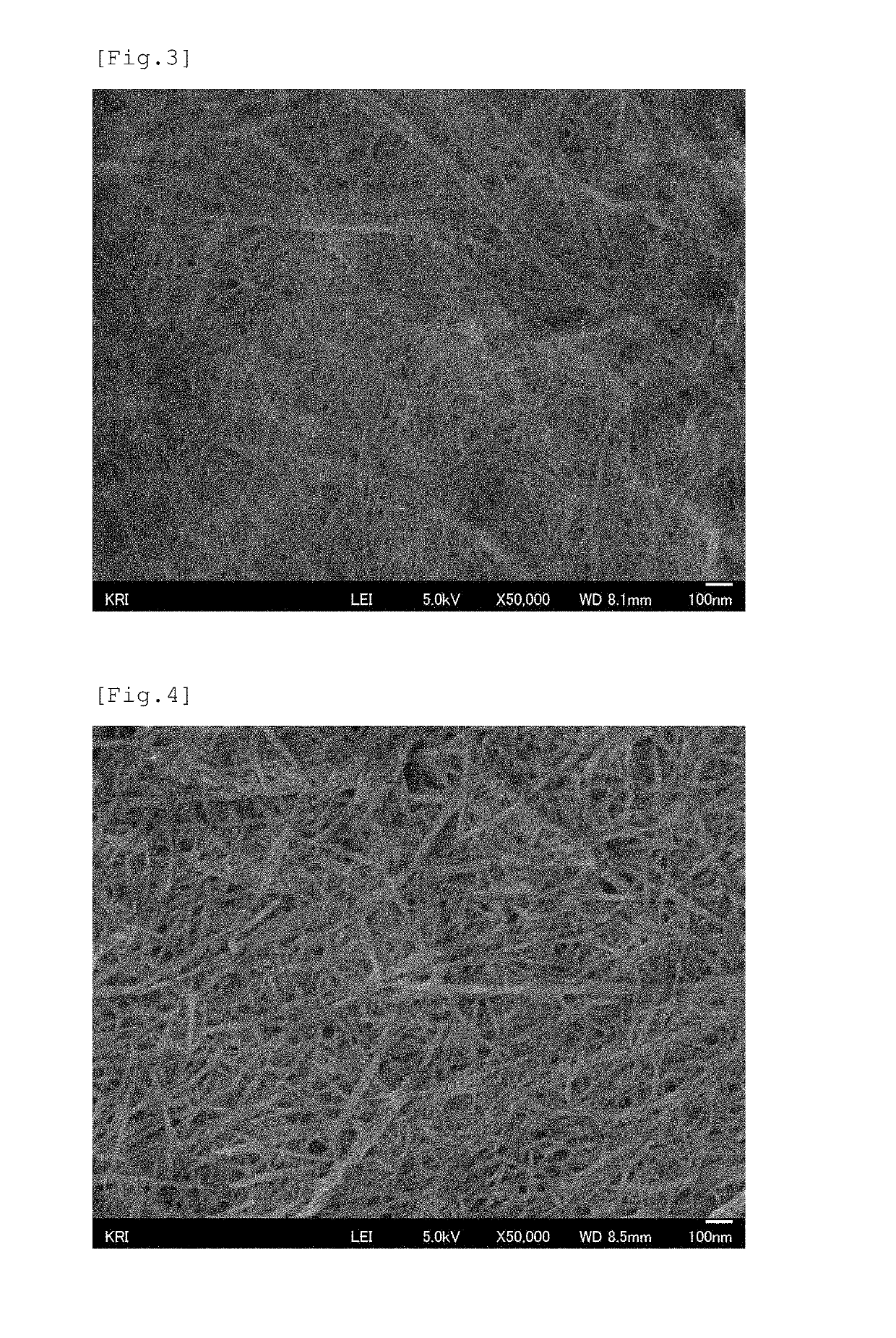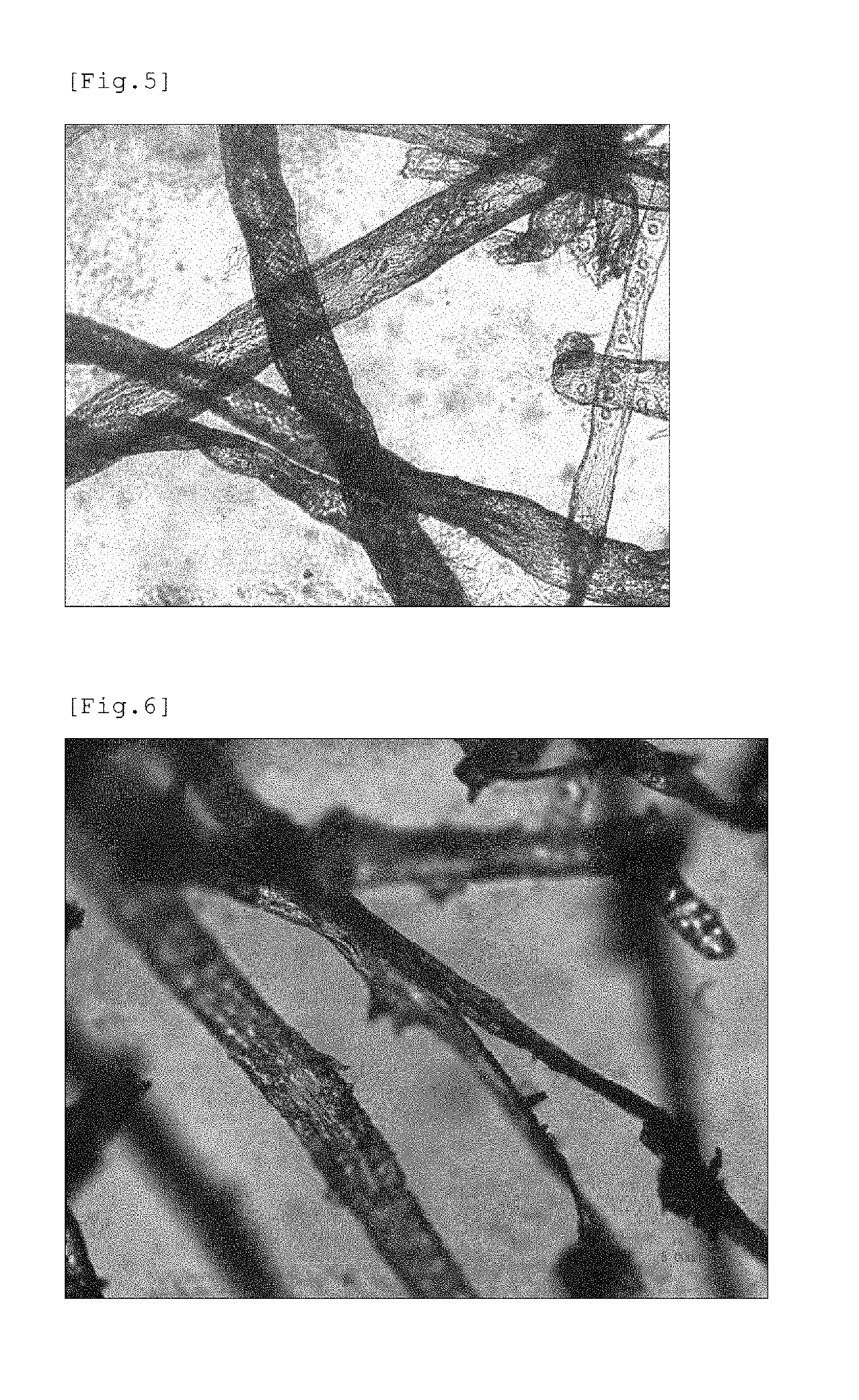Fine cellulose fiber and production method for same
a technology of cellulose fiber and production method, which is applied in the field of fine cellulose fiber and a method, can solve the problems of reducing the crystallinity degree of fibers to be obtained, reducing the yield of cellulose fibers, and reducing the damage to cellulose microfibrils, and achieving the effects of reducing the damage to cellulose microfibrils, and large aspect ratio
- Summary
- Abstract
- Description
- Claims
- Application Information
AI Technical Summary
Benefits of technology
Problems solved by technology
Method used
Image
Examples
example 1
[0168]1 g of vinyl acetate and 9 g of DMSO were loaded into a 20-milliliter sample bottle, and the mixed liquid was stirred with a magnetic stirrer until the mixed liquid became uniform. Next, 0.3 g of the cellulose pulp was added to the mixed liquid, and the whole was further stirred for 3 hours. After that, a fibrillation solution (vinyl acetate and DMSO) and a by-product (acetaldehyde or acetic acid) were removed by washing the resultant with distilled water. The presence or absence of the modification of the resultant fine cellulose fibers was confirmed by FT-IR analysis, their shapes were observed with a scanning electron microscope (SEM), their crystallinity degree was measured by the XRD analysis method, and their fibrillation degree and solvent dispersibility were evaluated. The result of the FT-IR analysis showed that the surfaces of the fine cellulose fibers were not modified. A SEM photograph of the fine fibers is shown in FIG. 1. As a result of the SEM observation, most ...
example 2
[0169]Fine cellulose fibers were obtained in the same manner as in Example 1 except that 0.01 g of sodium acetate was further added. The resultant fine cellulose fibers were evaluated in the same manner as in Example 1. With regard to the results of the evaluations, as shown in Table 1 and FIG. 2, the fiber diameters of the fine fibers were 100 nm or less, and a carbonyl group was confirmed by FT-IR analysis. Further, as a result of quantitative analysis by solid-state NMR, the average degree of ester substitution of the surfaces of the fine fibers was 0.25. In addition, it was confirmed that dry fine fibers were dispersed in dimethylacetamide or acetone.
example 3
[0170]Fine cellulose fibers were obtained in the same manner as in Example 1 except that 0.01 g of potassium acetate was further added. The resultant cellulose microfibrils were evaluated in the same manner as in Example 1. With regard to the results of the evaluations, as shown in Table 1 and FIG. 3, the fiber diameters of the fine fibers were 100 nm or less, and the average degree of ester substitution of the surfaces of the fine fibers was 0.3. In addition, it was confirmed that dry fine fibers were dispersed in dimethylacetamide or acetone.
PUM
| Property | Measurement | Unit |
|---|---|---|
| donor number | aaaaa | aaaaa |
| diameter | aaaaa | aaaaa |
| aspect ratio | aaaaa | aaaaa |
Abstract
Description
Claims
Application Information
 Login to View More
Login to View More - R&D
- Intellectual Property
- Life Sciences
- Materials
- Tech Scout
- Unparalleled Data Quality
- Higher Quality Content
- 60% Fewer Hallucinations
Browse by: Latest US Patents, China's latest patents, Technical Efficacy Thesaurus, Application Domain, Technology Topic, Popular Technical Reports.
© 2025 PatSnap. All rights reserved.Legal|Privacy policy|Modern Slavery Act Transparency Statement|Sitemap|About US| Contact US: help@patsnap.com



